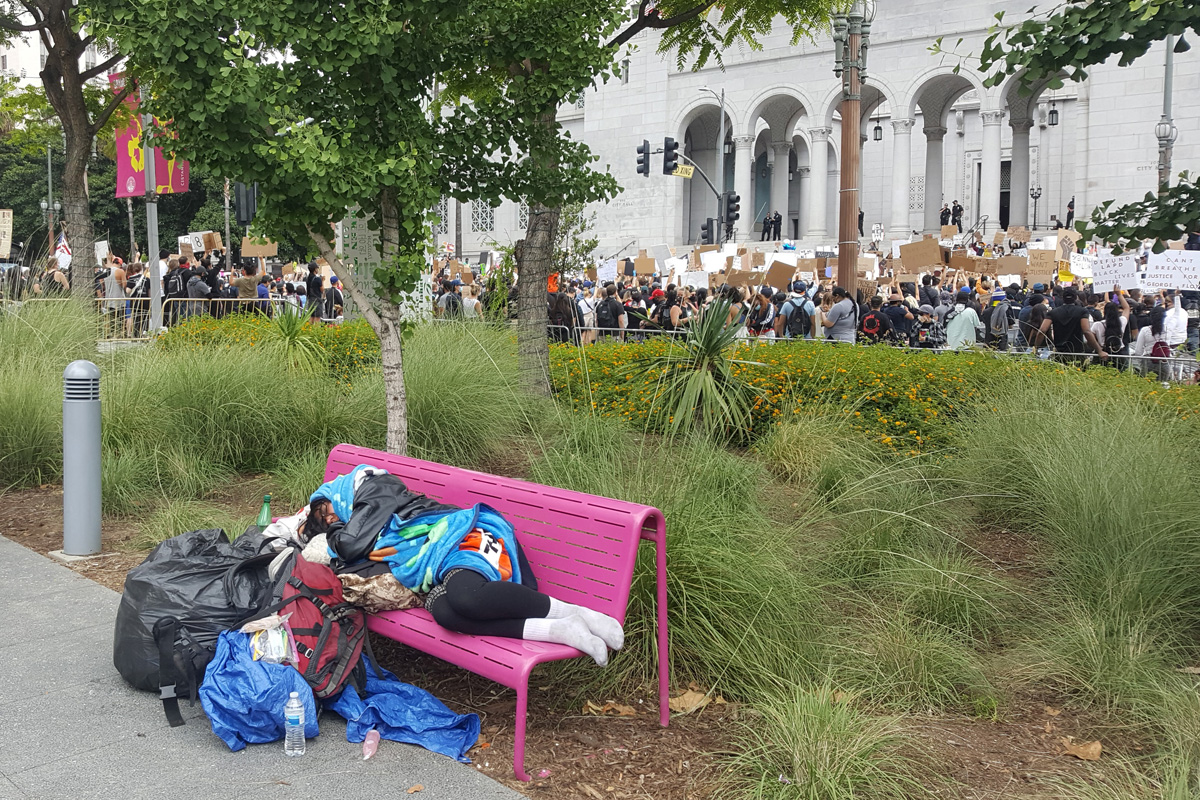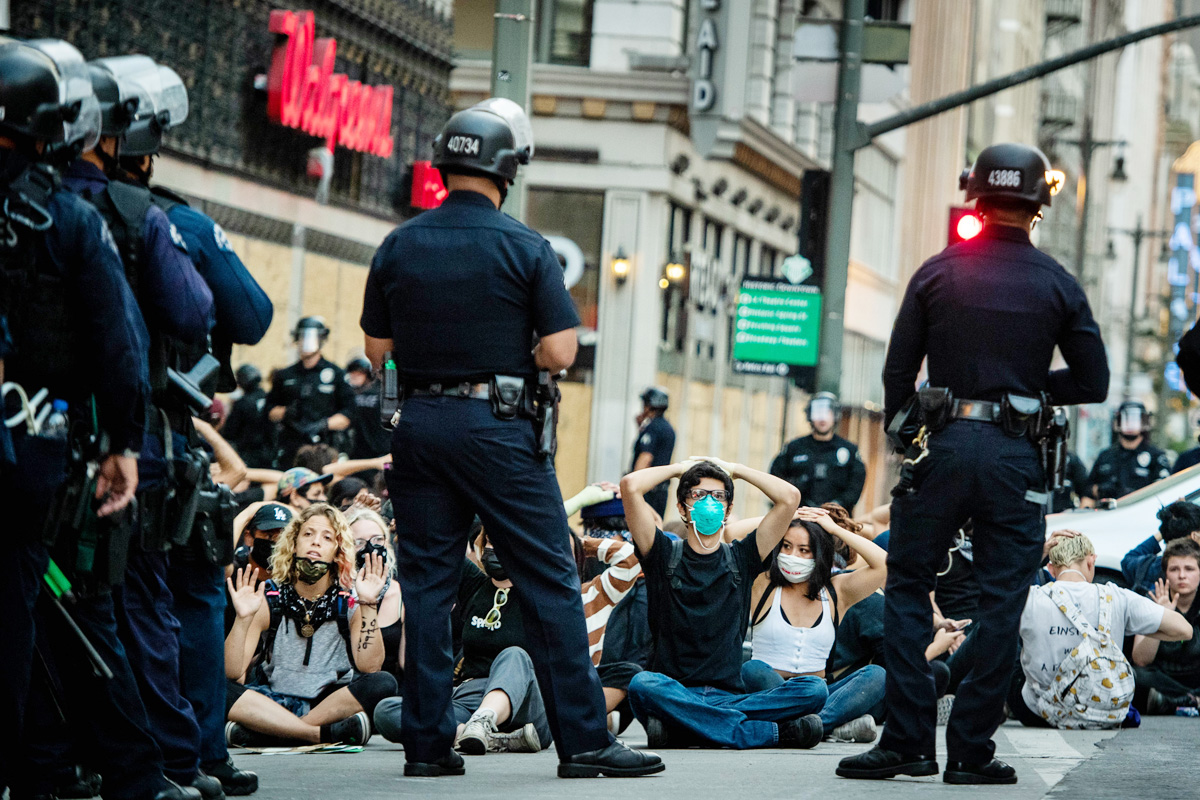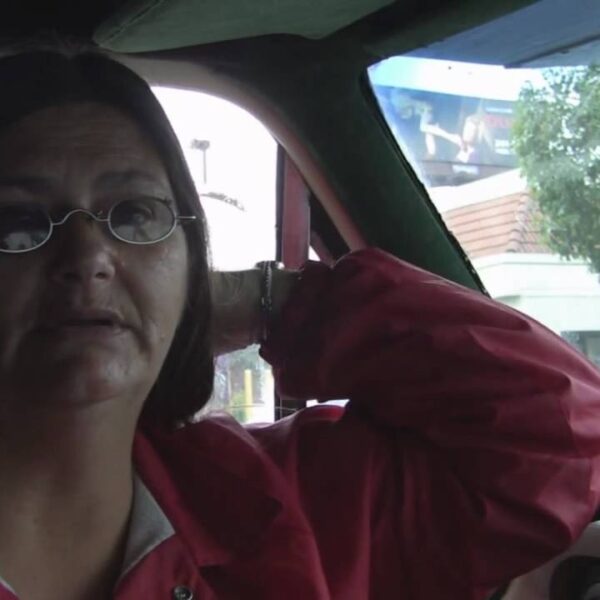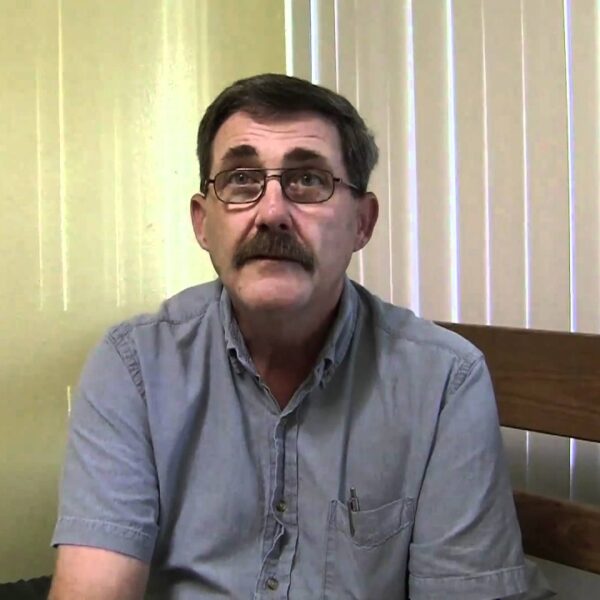For nearly a month, people have been taking to the streets in cities across the United States, protesting police brutality and systemic racism. The actions were sparked by the killing of George Floyd in Minneapolis by police. Since May, they have grown in response to other killings of black people by law enforcement and fights over the continued funding of militarized police departments.
In multiple cities, the protests – and particularly the political and law enforcement response to the unrest – has had an unintended consequence of disrupting care and services for unhoused people in the country.
Floyd, a black man, died on May 25 after police kneeled on his neck for nearly nine minutes. Following mass protests nationwide, the officers involved were arrested and charged by authorities.
Over the last three weeks, reporters and advocates in multiple cities have documented disrupted services as a result of law enforcement measures to stop protests. That ranged from curfews and the deployment of the National Guard to poor messaging to the unhoused and to service providers.
In Los Angeles, where protesters and activists are in a deep fight against the city’s budget and its heavy funding for police, the city’s large unsheltered homeless population has been caught up in the effects of the uprising. Many of the encampments around Los Angeles City Hall have found themselves surrounded by marching activists, or feet from riot police.

Lawsuit Filed Against LAPD
In a lawsuit filed by the National Lawyers Guild of Los Angeles, Black Lives Matter Los Angeles and the Los Angeles Community Action Network, advocates accused the Los Angeles Police Department of aggressive tactics against protesters. The suit also alleges that LAPD actions and strategies hurt unhoused Angelenos.
The suit argues that many unhoused people were arrested during curfews. It also alleges that LAPD shot three homeless men in wheelchairs with less-than-lethal projectiles during protests. Among them was a man who was hit in the eye; photos of him bleeding on Downtown’s Broadway thoroughfare while riot police stand in the background went viral online.
Alongside violence, response to the protests created other challenges for the unhoused and their supporters. The most prominent issue was curfews that started early, and in some cases would change to an earlier hour only minutes before going into effect. Los Angeles Homeless Services Authority Executive Director Heidi Marston said that the impact of the protests and related crackdowns was being felt in multiple spots across Los Angeles, with providers trying to adjust programs to make sure those on the streets were receiving food and other forms of support.
“Some people just stayed in their space, others felt food insecurity issues with curfews impacting ability to pick up and get food delivered,” Marston said. “We tried to distribute during the day. That certainly has an impact [on our efforts].”
The curfew notices were sent over phone and social media at the height of the first week of protests, which advocates said left many unhoused people in the dark as to the orders.
Caught in the Crossfire
Cities across the country have struggled with unhoused people getting caught up in the clashes between authorities and protesters. A common problem was curfews with poorly defined and communicated terms.
In New York City, which has a significantly higher percentage of shelter space available for unhoused individuals than Los Angeles, the Legal Aid Society distributed fliers to unsheltered people to inform them of the curfew, The Appeal reported. Some unhoused people used those fliers to inform officers of their exemption to the curfew if questioned, given how it can be hard to prove one is unhoused. In San Francisco, advocates said the measures would increase criminalization of the unhoused in the city, many of whom are Black.
In response to the curfews, the American Civil Liberties Union of Southern California filed suit against Los Angeles city and county officials on June 4 over the curfew. It was ended soon after. A similar legal challenge was issued in Sacramento.
Outreach Services Impacted by Curfews
Marston said that the protests and related response by authorities has had the largest impact in areas of Los Angeles such as Downtown and Hollywood, which also happen to be some of the hot spots for the city’s homelessness crisis. The protests also led LAHSA to limit the hours its outreach teams were out, for safety reasons, although after the curfews were lifted regular hours returned.
Private volunteer groups also found themselves dealing with new challenges out of the response to protests. Melissa Acedera, who organizes food distribution and helps hand out meals across Los Angeles, said that the curfew had the immediate effect of halting actions for a lot of volunteers. Private service providers often work during evenings and nights. She said that not only did it make it harder for people to go out and deliver supplies, it also forced volunteers to find different times to pick up items from grocers and other donors.
“As soon as it hit, it completely cut me off,” Acedera said. “Even with the shelter in place order [for the coronavirus], I felt pretty safe going out. I had a letter from the food bank to show law enforcement, but the curfew felt different. Frankly, seeing the National Guard blocks from Olvera Street scared me. It definitely, curfew halted everything.”
The first two weeks of protest also saw heavy police and security force presence in many cities. In Los Angeles, the National Guard was deployed and multiple law enforcement departments were mobilized. Thousands were arrested. According to the National Lawyers Guild of Los Angeles, the vast majority of people have been arrested for failure to disperse. Most were not held on bail, due to the zero dollar bail enacted for health reasons during the coronavirus pandemic.
Homelessness Is on the Rise
The protests and curfews all come as Los Angeles experiences a greater increase in its unhoused population. The 2020 LAHSA Homeless Count, recorded in January but released June 12, said that 41,290 people are unhoused in the City of Los Angeles, a 14.2 percent increase over a survey from the same period in 2019. In Los Angeles County the number sits at 66,433 people without homes, up 12.7 percent from last year. They do not reflect numbers since the outbreak of the COVID-19 coronavirus pandemic, which has prompted greater action by state and local officials to shelter unhoused Californians.
LAHSA’s report also highlighted the racial disparity of the homeless population in Los Angeles County. Black Angelenos make only 7.9 percent of the county’s population, but 33.7 percent of the unhoused community. At a Black Lives Matter and unhoused services rally on Saturday, June 13 at Echo Park Lake, speakers called out the recent numbers and the findings from the report. A coalition of organizations involved in an ongoing push to change the city’s budget away from policing and more toward services organized the event.
“The headline says that racism is the reason houselessness is up in Los Angeles,” said Pete White, co-director of the Los Angeles Community Action Network, a homeless advocacy and services group, near the start of the event. “Now, can I get a show of hands everybody out here that didn’t know that racism was one of the primary reasons that houselessness is up in Los Angeles? If you didn’t know that raise your hands.”
Almost no one raised their hands.
Following that, White talked about how activists have been pointing out how segregation, redlining, and other socioeconomic tools have left people of color disproportionately unhoused. LACAN and other groups have been part of a coalition in Los Angeles fighting for a “People’s Budget.” The plan is a counter to the city’s original plan for the fiscal year that would have boosted funding for LAPD. White and other speakers at the rally noted how unhoused people of color are often victims of police violence. Currently the city is exploring alternative spending plans with a focus on non-law enforcement services, following immense pressure from protesters and activists.
The protests themselves remain ongoing, with direct action happening daily in multiple points around Los Angeles, and marches taking over whole streets.













